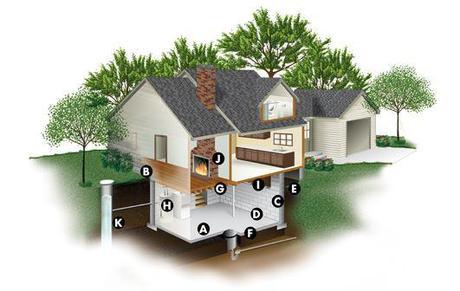Long term exposure to radon is second only to cigarette smoke as a cause of lung cancer so it's a big health concern... especially in your home, where you spend the most time... and in winter in the north country, where homes are sealed up for months at a time because it's cold outside!
Radon disclosures are required for Minnesota home sales starting in January 2014, building increased awareness of this colorless, odorless radioactive gas. It seeps up from the earth, the byproduct of uranium breaking down into radium... which disintegrates into radon. In Minnesota 2 in 5 homes have radon levels that pose a significant health risk.
So how does it get into your home? The info below from the Minnesota Department of Health explains common pathways.

A - Cracks in concrete slabs
B - Spaces behind brick veneer walls that rest on uncapped hollow-block foundations
C - Pores and cracks in concrete blocks
D - Floor-wall joints
E - Exposed soil, as in a sump or crawl space
F - Drain tile, if drained to an open sump
G - Mortar joints
H - Loose fitting pipe penetrations
I - Open tops of block walls
J - Building materials: brick, concrete, block
K - Well water (not commonly a source in Minnesota)
Download a printable version of the brochure "Radon: Keeping Your Home Safe", from the Minnesota Department of Health.
Sharlene Hensrud, RE/MAX Results - Email- Twin Cities Realtor
RELATED POSTS
- Radon Disclosure required in real estate transactions beginning January 1, 2014
- Radon in New Minnesota Homes

